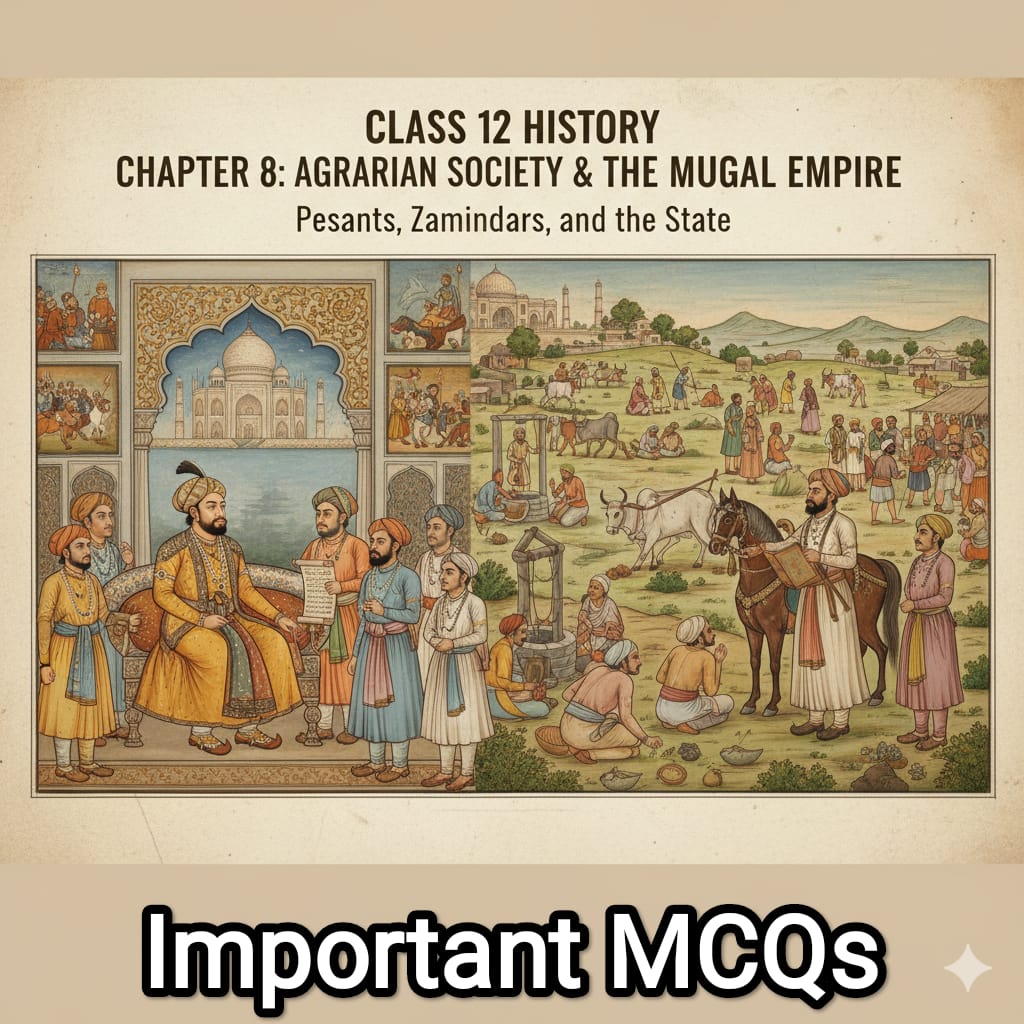🌾 Mughal Agrarian System – MCQs
1. Which among the following was the name given to the headmen of Panchayat?
(a) Muqaddam
(b) Patwari
(c) Quazi
(d) Quilachas
Ans. (a) Muqaddam
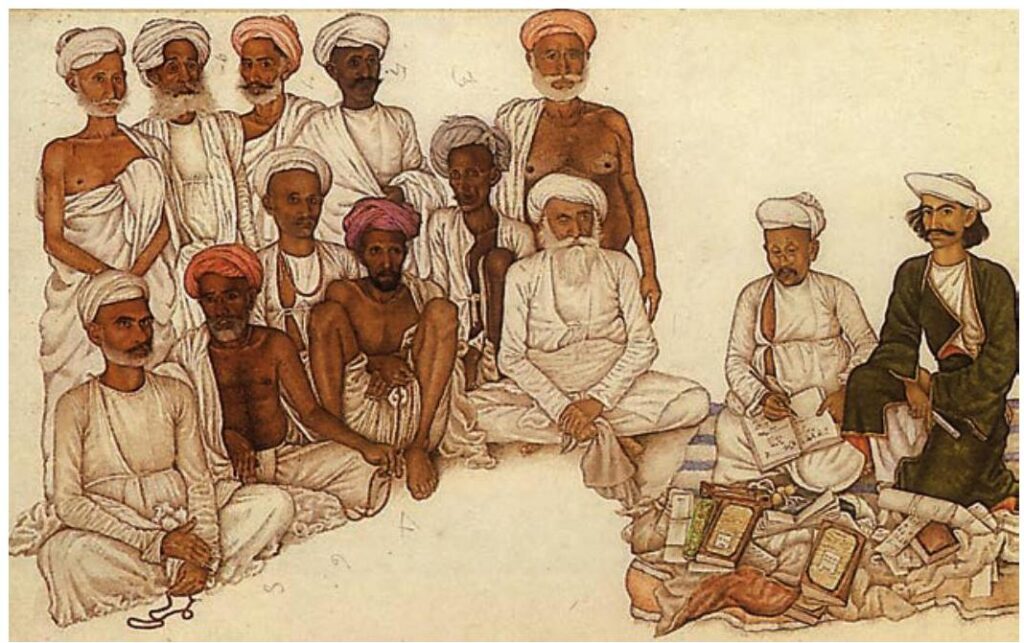
Explanation: The Muqaddam was the village headman responsible for maintaining order, collecting revenue, and representing the village in administrative matters.
2. In which century the Gauravas, who cultivated land around Vrindavan (Uttar Pradesh), sought Rajput status?
(a) 16th
(b) 17th
(c) 18th
(d) 19th
Ans. (b) 17th
Explanation: During the 17th century, the Gauravas, a cultivating community, tried to elevate their social rank by claiming Rajput lineage, showing social mobility within agrarian society.
3. Identify the book of Babur by the following lines:
“In Hindustan hamlets and villages, towns indeed, are depopulated and set up in a moment.”
(a) Ain
(b) Ain-i Akbari
(c) Babur Nama
(d) None of the above
Ans. (c) Babur Nama
Explanation: These lines are from Babur Nama, the autobiographical work of Babur, describing the unstable settlement patterns in India.
4. Which of the following statement is/are correct?
I. The central purpose of the “Ain” was to present a vision of Akbar’s Empire.
II. Ain can be supplemented by descriptions contained in sources emanating from regions away from the Mughal capital.
(a) Only I
(b) Only II
(c) Both I and II
(d) Neither I nor II
Ans. (c) Both I and II
Explanation: The Ain-i-Akbari aimed to present a complete picture of Akbar’s rule and can be compared with regional sources to understand local variations.
5. Which of the following crops was introduced into India via Africa and Spain?
(a) Chillies
(b) Maize
(c) Papaya
(d) Potatoes
Ans. (b) Maize
Explanation: Maize was brought to India through Africa and Spain after the Columbian exchange; it became a common crop during the Mughal period.
6. The Mughal state encouraged peasants to cultivate crops as they brought in more revenue. Crops such as cotton and sugarcane were called:
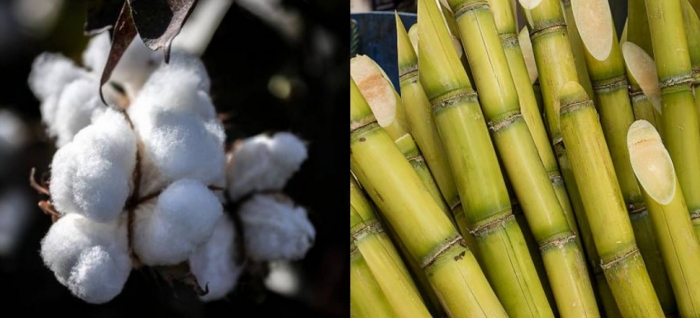
(a) Jins-i kamil
(b) Do-fasla
(c) Shahnahr
(d) Asamis
Ans. (a) Jins-i kamil
Explanation: Jins-i Kamil referred to cash crops that generated maximum revenue for the state due to their commercial value.
7. Among those who tilled the land, there was a sizeable number who worked as menials or agricultural labourers. Who were they?
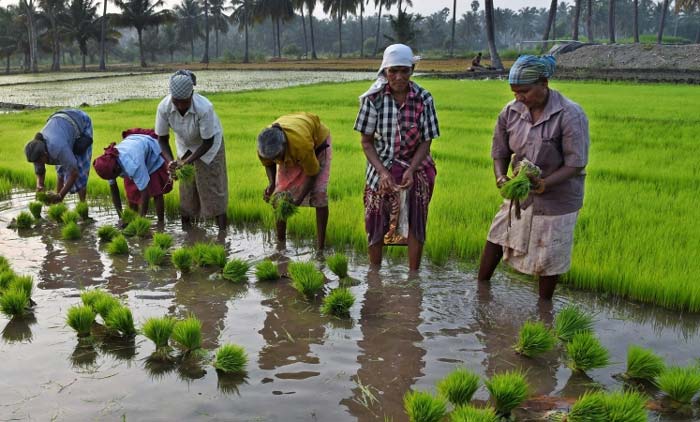
(a) Dalits
(b) Halalkhoran
(c) Mallahzadas
(d) Majur
Ans. (d) Majur
Explanation: Majur referred to landless labourers who worked on others’ lands for wages or part of the produce.
8. Which of the following is the major source for the agrarian history of the sixteenth and early seventeenth centuries from the Mughal court?
(a) Chronicles and documents
(b) Travelogue
(c) Paintings
(d) Morocco
Ans. (a) Chronicles and documents
Explanation: Persian chronicles like Ain-i-Akbari and Babur Nama serve as the main sources for studying Mughal agrarian systems.
9. Who among the following was the author of the book Ain-i-Akbari?
(a) Abul Fazl
(b) Akbar
(c) Babur
(d) Mukundaram Chakrabarti
Ans. (a) Abul Fazl
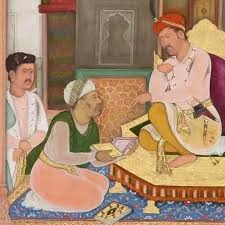
Explanation: Abul Fazl wrote Ain-i-Akbari as part of Akbarnama; it details Akbar’s administration, economy, and culture.
10. The testimony of an ______ traveller, Giovanni Careri, who passed through India c. 1690, provides a graphic account of how silver reached India.
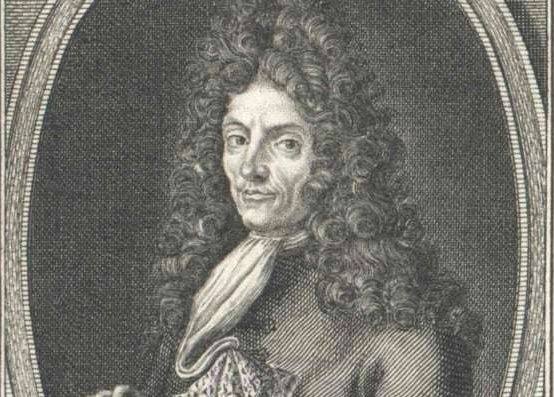
(a) English
(b) German
(c) Italian
(d) French
Ans. (c) Italian
Explanation:
Giovanni Careri was an Italian traveller who described global silver trade routes reaching India in the late 17th century.
11. The panchayat derived its funds from contributions made by individuals to a common financial pool. How were these finances utilized?
(a) For entertaining revenue officials visiting the village
(b) For welfare during calamities
(c) For constructing bunds or canals
(d) All of the above
Ans. (d) All of the above
Explanation: Panchayat funds were community resources used for collective welfare, infrastructure, and hospitality for officials.
12. Which of the following options about village artisans is incorrect?
(a) Village artisans included potters, blacksmiths, carpenters, barbers, goldsmiths.
(b) They were compensated in various ways.
(c) They often received harvest shares or land.
(d) In Gujarat, such lands became the artisans’ miras or watan, their hereditary holding.
Ans. (d)
Explanation: The statement is incorrect because in Gujarat, the miras or watan system applied mainly to hereditary peasants, not village artisans.
13. How many constituents were there in the collective village community?
(a) 3
(b) 4
(c) 5
(d) 6
Ans. (a) 3
Explanation: The village community comprised three main constituents — the cultivators, the panchayat, and the village headman.
14. Which among the following name was given to peasants who were non-resident cultivators belonging to other villages but cultivating on a contractual basis?
(a) Khud-kashta
(b) Pahi-kashta
(c) Raiyat
(d) Muzarian
Ans. (b) Pahi-kashta
Explanation: Pahi-kashta peasants cultivated lands away from their home villages on lease or contract.
15. Which state’s archival records from western India contain petitions to the panchayat complaining about extortionate taxation or forced labour by higher castes or officials?
(a) Punjab
(b) Lahore
(c) Rajasthan
(d) Tamil Nadu
Ans. (c) Rajasthan
Explanation: The Rajasthan archives preserve numerous village-level petitions revealing local governance and disputes.
16. Which among the following was the poet of an excerpt from the Bengali poem Chandimangala?
(a) Shah Jahan
(b) Jean Baptiste
(c) Abul Fazl
(d) Mukundaram Chakrabarti
Ans. (d) Mukundaram Chakrabarti
Explanation: Mukundaram Chakrabarti was a 16th-century Bengali poet known for Chandimangala, a devotional narrative poem.
17. In which year did Akbar and his nobles come across tobacco for the first time?
(a) 1606
(b) 1605
(c) 1604
(d) 1603
Ans. (c) 1604
Explanation: Tobacco was introduced into India by the Portuguese around 1604 during Akbar’s reign.
18. Which of the following were significant factors related to the constant expansion of agriculture?
(a) Abundance of land
(b) Availability of labour
(c) Mobility of peasants
(d) All of the above
Ans. (d) All of the above
Explanation: Expansion was supported by land availability, labour movement, and flexible cultivation systems.
19. Which of the following is correct regarding rural India?
(a) It was characterized by settled peasant production alone.
(b) Hilly regions were equally cultivable.
(c) Forest areas made up a substantial proportion of territory.
(d) Varied topography was not part of agrarian society.
Ans. (c)
Explanation: Forests covered a large area and played an important role in the rural economy through wood, grazing, and hunting resources.
20. Which of the following terms did Indo-Persian sources most frequently use to denote a peasant?
(a) Raiyat
(b) Muzarian
(c) Asami
(d) All of these
Ans. (d) All of these
Explanation: All these terms—Raiyat, Muzarian, and Asami—were used interchangeably for peasants in Mughal documents.
21. Which of the following were the duties performed by State officials in the 16th century?
(a) Collection of land revenue
(b) Measuring the land
(c) Keeping the records
(d) All of the above
Ans. (d) All of the above
Explanation: Mughal officials were responsible for land measurement, revenue assessment, and record maintenance.
22. In the city people water trees and fields by means of a wheel… Which city is being discussed here?
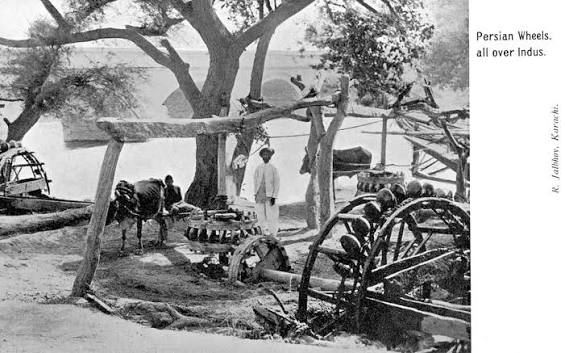
(a) Lahore
(b) Punjab
(c) Sind
(d) Jammu
Ans. (a) Lahore
Explanation: The description matches Lahore, where Persian wheels were used for irrigation during Mughal times.
23. Castes such as the Ahirs, Gujars, and Malis rose in hierarchy because of the profitability of which of the following?
(a) Pastoral and fishing
(b) Pastoral and cattle rearing
(c) Pastoral and horticulture
(d) Cattle rearing and horticulture
Ans. (d) Cattle rearing and horticulture
Explanation: Economic success in cattle and horticultural activities led to upward mobility of these castes.
24. Which of the following sentence regarding women in Agrarian Society is incorrect?
(a) Women sowed, weeded, threshed and winnowed the harvest.
(b) Artisanal tasks such as spinning yarn, sifting and kneading clay for pottery, and embroidery were among the many aspects of production dependent on female labour.
(c) Artisan women worked not only in the fields, but even went to the houses of their employers or to the markets if necessary.
(d) Women were not considered an important resource in agrarian society also because they were child bearers in a society dependent on labour.
Ans. (d)
Explanation:
Women were vital contributors in agrarian life. They worked in the fields, spun yarn, and made pottery. They were indeed an important economic resource. Hence, statement (d) is incorrect.
25. What do you understand by the term Khud-Kashta?
(a) Head of jati panchayat
(b) Revenue collectors
(c) Non-resident cultivators
(d) Peasants who were residents of the village
Ans. (d)
Explanation:
Khud-Kashta were peasants who lived in the same village where they cultivated land, unlike Pahi-Kashta cultivators who worked elsewhere.
26. Identify the poem with the help of the following information:
Hearing the news, outsiders came from various lands.
Kalaketu then bought and distributed among them heavy knives, axes, battle-axes and pikes.
From the north came the Das people.
(a) Chandimangala
(b) Mukundaram Chakrabarti
(c) Kalaketu
(d) None of the above
Ans. (a) Chandimangala
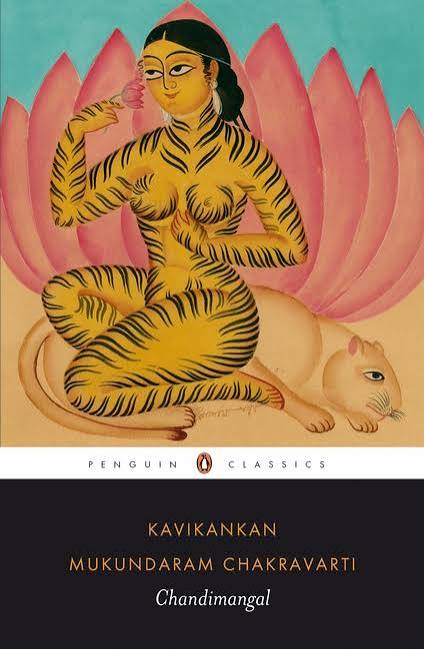
Explanation:
These lines are from the Bengali poem Chandimangala written by Mukundaram Chakrabarti, describing Kalaketu’s story.
27. The crops which were banned by Jahangir:
(a) Betel leaf
(b) Chillies
(c) Tobacco
(d) Maize
Ans. (c) Tobacco
Explanation:
Tobacco was introduced in India during Akbar’s reign and became popular. Jahangir later banned its use due to health and moral concerns.
28. Which among the following was the place to which Ahom kings belong?
(a) Madhya Pradesh
(b) Assam
(c) Chhattisgarh
(d) West Bengal
Ans. (b) Assam
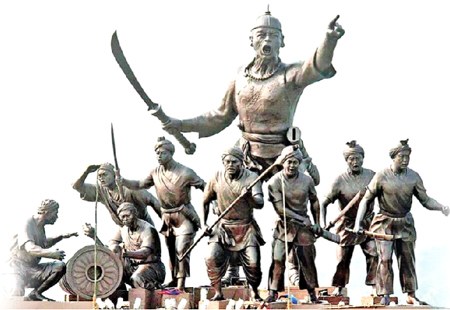
Explanation:
The Ahom dynasty ruled over the Brahmaputra Valley region of Assam from the 13th to the early 19th century.
29. Match the following:
A – 1556–1605 → (i) Reign of Akbar
B – 1605–1627 → (ii) Reign of Jahangir
C – 1628–1658 → (iii) Reign of Shah Jahan
D – 1658–1707 → (iv) Reign of Aurangzeb
(a) (i), (iii), (ii), (iv)
(b) (i), (iii), (iv), (iii)
(c) (i), (ii), (iii), (iv)
(d) (iii), (ii), (i), (iv)
Ans. (c) (i), (ii), (iii), (iv)
Explanation:
These years correspond to the reigns of the four major Mughal emperors from Akbar to Aurangzeb in chronological order.
30. Which of the following is/are significant factors related to the constant expansion of agriculture?
(a) The abundance of land
(b) Availability of labour
(c) The mobility of peasants
(d) All of the above
Ans. (d) All of the above
Explanation:
Agricultural expansion during the Mughal period was facilitated by ample land, labour availability, and peasant migration for better cultivation opportunities.
31. Read the following information and identify the author:
“Todia a village must be very small indeed if it has not a moneychanger called a Shroff … enhance the rupee as they please for paisa and the paisa for cowrie shells.”
(a) Jean-Baptiste Tavernier
(b) Ibn Juzayy
(c) Bernier
(d) Al-Biruni
Ans. (a) Jean-Baptiste Tavernier
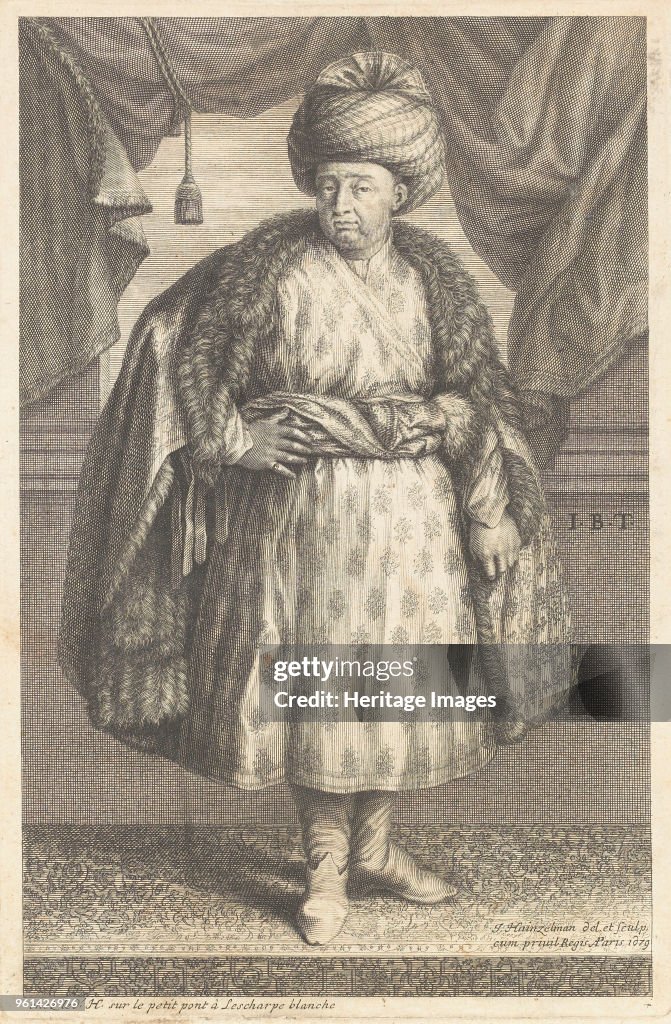
Explanation:
Jean-Baptiste Tavernier, a French traveller, wrote extensively on the Indian economy, trade, and village money systems during the 17th century.
32. Which of the following information is/are correct about the Ain by Abul Fazl?
I. Ain remains an extraordinary document of its times.
II. It provided fascinating glimpses into the structure and organisation of the Mughal Empire.
III. It gave qualitative information about its products and people.
IV. Abu’l Fazl wrote mostly about physical events.
(a) II and III
(b) I and III
(c) I and IV
(d) I and II
Ans. (d) I and II
Explanation:
The Ain-i Akbari is an administrative document providing a detailed picture of Akbar’s empire, its governance, and its economic structure.
33. The system in Bengal in which zamindars remunerated blacksmiths, carpenters, goldsmiths, etc. for their work by paying them a small daily allowance and diet money was known as:
(a) Jajmani system
(b) Miras system
(c) Peshkash
(d) Kharbandi
Ans. (a) Jajmani system
Explanation:
In the Jajmani system, artisans and service providers were compensated in cash, kind, or land for services rendered to villagers.
34. The peshkash among the following was levied from the forest people:
(a) Supply of labour
(b) Supply of elephants
(c) Supply of cotton
(d) Supply of horses
Ans. (b) Supply of elephants
Explanation:
Forest tribes were required to offer elephants as tribute or tax (peshkash) to the state during Mughal rule.
35. Find the incorrect statement regarding village artisans:
(a) Village artisans included potters, blacksmiths, carpenters, barbers, even goldsmiths.
(b) They were compensated by villagers through land allotments or harvest shares.
(c) The most common way of compensation was in kind or land.
(d) In Gujarat, such lands became the artisans’ miras or watan, their hereditary holding.
Ans. (d)
Explanation:
The statement is wrong because artisans in Gujarat did not necessarily inherit such lands permanently as miras or watan.
36. Which one of the following statements related to caste system during 16th–17th century is not correct?
(a) Deep inequities meant that cultivators were a highly homogeneous group.
(b) Many cultivators were menials or labourers.
(c) Certain castes were confined to menial work despite abundant land.
(d) In Muslim communities, halalkhoran were outcasted labourers.
Ans. (a)
Explanation:
The statement (a) is incorrect because cultivators were not homogeneous; caste distinctions caused social divisions.
37. Which state’s archival records contain petitions presented to the panchayat complaining about extortionate taxation or forced labour (begar)?
(a) Punjab
(b) Lahore
(c) Rajasthan
(d) Tamil Nadu
Ans. (c) Rajasthan
Explanation:
Rajasthan’s regional records provide detailed examples of peasants’ petitions about unfair taxation and labour demands.
38. Identify the traveller/Author:
Goods like gold, copper, musk, wool, and dyes came from the mountains, exchanged for cloth, amber, salt, and glassware.
(a) Jesuit Roberto Nobili
(b) Abu’l Fazl
(c) Ibn Battuta
(d) Mukundaram Chakrabarti
Ans. (b) Abu’l Fazl
Explanation:
Abu’l Fazl, in the Ain-i Akbari, described trade exchanges between the Himalayan regions and the plains.
39. The Mughal classification of land under different categories was mainly based on:
(a) Irrigation status
(b) Ownership status
(c) Cultivation status and fertility
(d) Crop productivity
Ans. (c)
Explanation:
Akbar’s land classification (Polaj, Parauti, Chachar, Banjar) depended on fertility and cultivation frequency.
40. The basic unit of agricultural society was:
(a) State
(b) City
(c) Town
(d) Village
Ans. (d) Village
Explanation:
Village was the smallest but most vital unit of Mughal agrarian administration.
41. The Muslim community which was considered menial:
(a) Mandal
(b) Halalkhoran
(c) Majur
(d) Jangli
Ans. (b) Halalkhoran
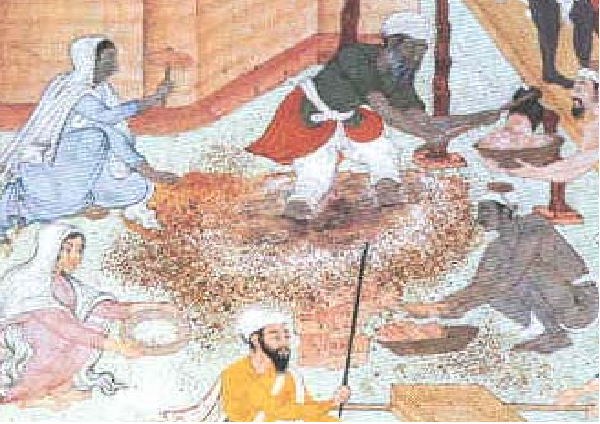
Explanation:
Halalkhoran were a menial Muslim caste performing scavenging and cleaning work, often treated as outcasts.
42. Which one of the following factors is not associated with the limitation of Ain?
(a) Numerous errors in totalling
(b) Data not uniform from all provinces
(c) Lack of data for Bengal and Orissa
(d) Data was relevant for the whole country
Ans. (d)
Explanation:
The data of Ain-i Akbari was largely from the Delhi region; hence, it cannot be applied to the entire empire.
43. Which one of the following is a correct pair?
(a) Seydi Ali Reis – England
(b) Antonio Monserrate – Turkey
(c) Peter Mundy – Spain
(d) François Bernier – France
Ans. (d)
Explanation:
François Bernier was a French physician and traveller who wrote detailed accounts of Mughal India.
44. Consider the following statements:
- The effective land revenue during the Mughal rule was agricultural produce.
- Mughal rulers didn’t pay attention to increasing cultivation.
(a) Only I
(b) Only II
(c) None
(d) Neither I nor II
Ans. (a)
Explanation:
Revenue was collected from agricultural produce, and the Mughals actively promoted agricultural expansion—hence only statement I is correct.
45. Which of the following crops were considered as Jins-i-Kamil?
(a) Cotton and sugarcane
(b) Maize and sugarcane
(c) Rice and wheat
(d) Chillies and potatoes
Ans. (a)
Explanation:
Crops like cotton and sugarcane were termed Jins-i-Kamil (perfect crops) because of their high market value and yield.
46. Find the incorrect match:
(a) Headman – Mandal
(b) Patwari – Village accountant
(c) Labour – Begar
(d) Scrubland – Bangar
Ans. (d)
Explanation:
Bangar refers to fertile alluvial soil, not scrubland. Hence, the match is incorrect.
47. Consider the following statements regarding village artisans:
- The distinction between artisans and peasants was fluid.
- Village artisans provided services in return for compensation.
- The system of goods-for-services existed.
- In Orissa, this system was known as Jajman system.
(a) I, II, and III
(b) III, IV, and I
(c) I, III, and IV
(d) II and IV
Ans. (a)
Explanation:
Most artisans were also cultivators, and their services were compensated in kind or goods, forming an interdependent village economy.
